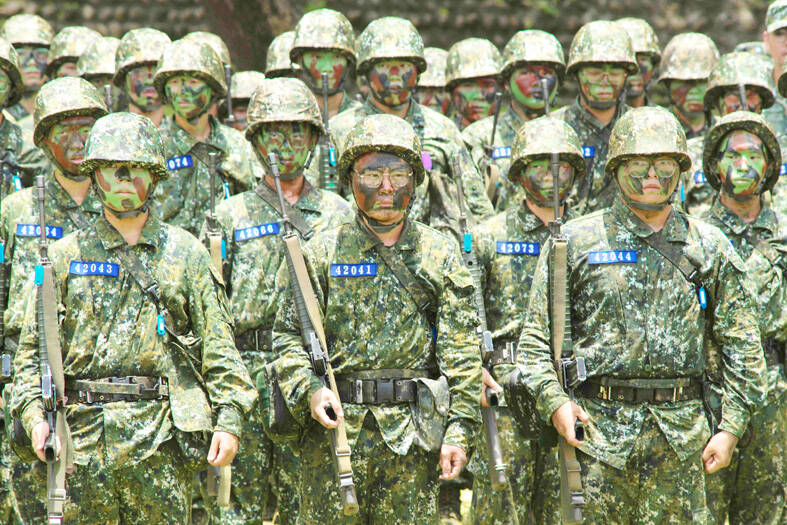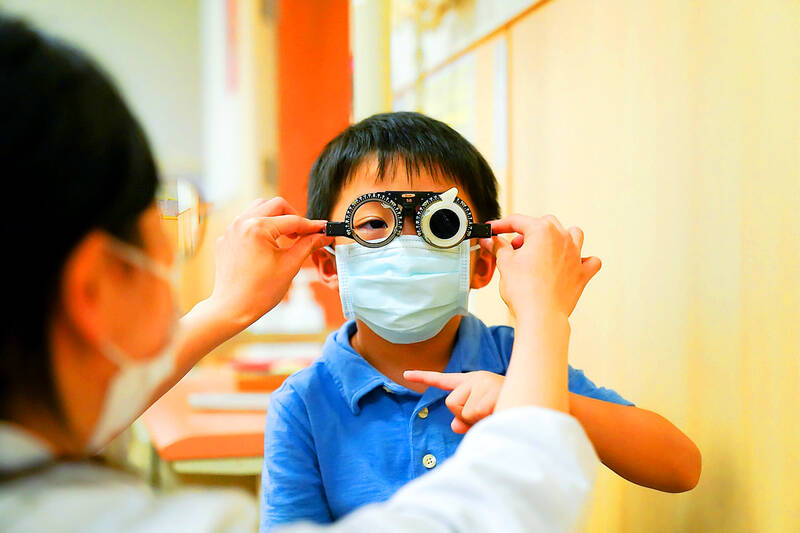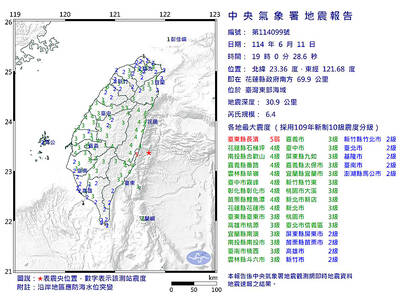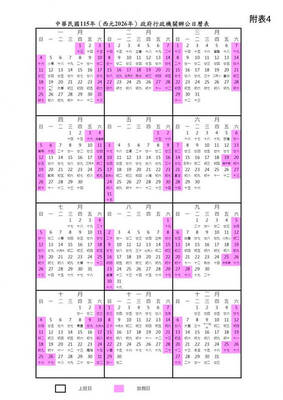In the final days of their eight-week bootcamp, dozens of young conscripts are being tested on an obstacle course. The men in full combat kit are crawling underneath rows of razor wire and through bunkers as controlled explosions blast columns of dirt into the air. Pink and green smoke blooms in a simulated gas attack, requiring the conscripts to quickly don gas masks so they can rush the zone. It is here where many of them pause, stopping the assault drill to spend precious seconds removing their glasses so the masks would fit.
The conscripts mostly look to be in their early 20s. Statistics suggest that means anywhere up to 90 percent of them have some degree of myopia, otherwise known as shortsightedness.
Taiwan has one of the world’s highest rates of myopia, alongside most of East Asia and Singapore. As well as the platoons of soldiers in spectacles, there are plenty of other signs. Optometry shops are everywhere — just around Taipei there are more than 40 outlets of Own Days, a chain which tests customers’ eyesight and makes prescription eyewear on-site within an hour. Laser eye surgeons advertise the latest tech, relatively cheap, to a virtual production line of patients each day.

Photo: Sam Yeh, AFP
“Eye health is the most important sensory organ in our body. Every day we wake up and need to use our eyes,” said Wu Pei-chang (吳佩昌), a leading researcher of the subject and director of the Myopia Treatment and Prevention Center at Chang Gung Memorial Hospital in Kaohsiung.
Myopia is a preventable disease in which abnormal elongation of the eyeball causes light to focus in front of the retina instead of on its surface. The distortion level is measured in diopters, and high myopia (when the distortion has progressed past -5.00 diopters) can lead to blindness if left untreated. The most crucial time is childhood, while a child’s eyes are still developing.
“Once they onset myopia the progression is very fast,” Wu said.

Photo courtesy of Taipei Tzu Chi Hospital
For decades science said myopia was a genetic condition, but from the 1960s and 70s an explosion in rates in East Asian countries — which were concurrently undergoing massive economic and educational expansion — upended that thinking. By the 1990s, rates of myopia in Taiwan, Hong Kong, South Korea and Singapore had risen from about 20 percent to more than 80 percent. China, initially delayed by the Cultural Revolution, soon joined them.
Myopia is now known to be linked to excessive “nearwork,” like reading, studying and computer work. More recent studies have found that increased outdoor time is a crucial protective factor.
That is why scientists say the rates are so high in East Asia and Singapore, where the cultures heavily emphasize high educational outcomes, with extensive study time favored by parents over outdoor play.
It is now a problem that is spreading worldwide. A study published in September last year in the British Journal of Ophthalmology found global rates of myopia tripled between 1990 and 2023. By 2050, almost half the world’s population is projected to have it, with corresponding earlier onset, faster progression and greater severity.
Taiwan’s rates are still high, but government and social programs have shown measurable success and experts say it is well past its peak. As rates rise in the west, it might have lessons to share.
Wu, himself shortsighted, was a young resident when he started to notice an alarming number of his patients and colleagues also had myopia, with many facing serious complications of the disease’s advanced progression. It became his life’s work. A paper in 2004 found that high myopia was the number one cause of irreversible blindness in Taiwan. Lobbied by Wu, who was now on national advisory boards, the government enacted new policies, including twice-yearly testing of school students and improved treatment options. However, the rates were still increasing.
“The eyes are developing rapidly [in childhood],” Australian National University professor Ian Morgan said. “The myopia has until around the age of 18 to 20 before it stabilizes. So if a kid becomes myopic at the age of six, they still have about 14 years for it to get worse.”
A few years later, two studies — including one from Australia led by Morgan — offered a lightbulb moment for Taiwan. Both found that the more time kids spent outdoors, the less likely they were to have myopia.
Wu ran his own trials, finding similar results. It led to a 2010 government initiative Tian-tian 120 (天天120, “120 every day”), calling for all children to spend at least two hours outside a day as a “protective factor.”
“It was actually very simple — [the problem was] that myopia has a protective factor and a risk factor, but we had only been focusing on the risk factor,” says Wu.
The outdoor time reversed myopia’s upward trend, bringing the rate among primary schoolchildren from more than 50 percent down to 45 percent within a few years. In Yilan, a 2014 community program achieved about a 50 percent reduction at the preschool level.
Researchers were emboldened. They had found a way to slow the onset of myopia, allowing children to reach the crucial stage of adulthood with minimal progression of the disease.
However, they had to convince parents and schools to ease up on the homework time.
Taiwanese statistics show myopia appears to significantly worsen at the times when students move to new school stages with sudden increases in study load. A 2017 study found the rate of myopia increased from 9 percent to 19.8 percent between the ages of six and seven, when children start first grade, while high myopia increased by more than 50 percent between sixth and seventh grade.
At a junior-high school in Taipei, dozens of eighth grade students are lined up outside the school clinic for their twice-yearly check. If any show signs of myopia, the two nurses would send a letter home to the parents within days, with requests to show proof of medical follow-ups within a fortnight.
There are also growing concerns about the impact of screen time, which is rising globally. Last week a South Korean study found every hour of screen time raised the chances of myopia among children.
Rates in Taiwan are still high, but Morgan and Wu say the peak is over and Taiwan is on the way to bringing rates down. Government data is frustratingly scant, but Wu says he is finalizing a 10-year study that is suggesting the prevalence is now “down very low” from a decade ago.
At a Taipei junior-high school, the teachers estimate their students get probably 60 minutes of outdoor time during school hours, and maybe another 30 on their way home. As the kids move up grades, “the pressure to study increases.”
Asked where the pressure is still coming from — the school, parents or peers — the teachers laughed.
“Everywhere,” they said.
Additional reporting by Jason Tzu Kuan Lu

A magnitude 6.4 earthquake struck off the coast of Hualien County in eastern Taiwan at 7pm yesterday, the Central Weather Administration (CWA) said. The epicenter of the temblor was at sea, about 69.9km south of Hualien County Hall, at a depth of 30.9km, it said. There were no immediate reports of damage resulting from the quake. The earthquake’s intensity, which gauges the actual effect of a temblor, was highest in Taitung County’s Changbin Township (長濱), where it measured 5 on Taiwan’s seven-tier intensity scale. The quake also measured an intensity of 4 in Hualien, Nantou, Chiayi, Yunlin, Changhua and Miaoli counties, as well as

Taiwan is to have nine extended holidays next year, led by a nine-day Lunar New Year break, the Cabinet announced yesterday. The nine-day Lunar New Year holiday next year matches the length of this year’s holiday, which featured six extended holidays. The increase in extended holidays is due to the Act on the Implementation of Commemorative and Festival Holidays (紀念日及節日實施條例), which was passed early last month with support from the opposition Chinese Nationalist Party (KMT) and Taiwan People’s Party. Under the new act, the day before Lunar New Year’s Eve is also a national holiday, and Labor Day would no longer be limited

COMMITMENTS: The company had a relatively low renewable ratio at 56 percent and did not have any goal to achieve 100 percent renewable energy, the report said Pegatron Corp ranked the lowest among five major final assembly suppliers in progressing toward Apple Inc’s commitment to be 100 percent carbon neutral by 2030, a Greenpeace East Asia report said yesterday. While Apple has set the goal of using 100 percent renewable energy across its entire business, supply chain and product lifecycle by 2030, carbon emissions from electronics manufacturing are rising globally due to increased energy consumption, it said. Given that carbon emissions from its supply chain accounted for more than half of its total emissions last year, Greenpeace East Asia evaluated the green transition performance of Apple’s five largest final

The first tropical storm of the year in the western North Pacific, Wutip (蝴蝶), has formed over the South China Sea and is expected to move toward Hainan Island off southern China, the Central Weather Administration (CWA) said today. The agency said a tropical depression over waters near the Paracel and Zhongsha islands strengthened into a tropical storm this morning. The storm had maximum sustained winds near its center of 64.8kph, with peak gusts reaching 90kph, it said. Winds at Beaufort scale level 7 — ranging from 50kph to 61.5kph — extended up to 80km from the center, it added. Forecaster Kuan Hsin-ping